Baylor set to celebrate Big 12 title with opening of on-campus stadium
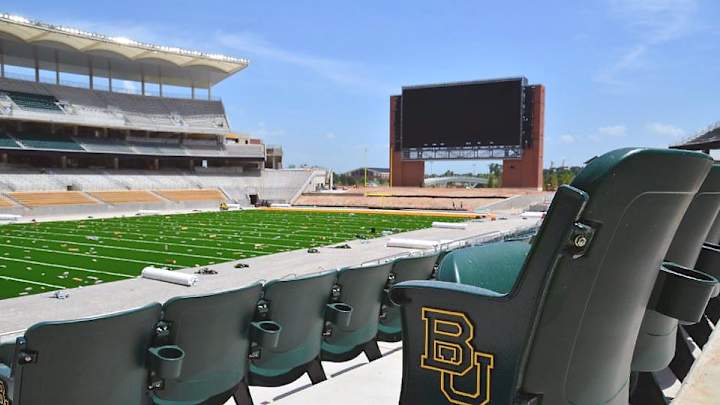
The view from Waco’s Brazos River—or Interstate 35, for that matter—never looked so, well, full of Baylor football. The brand-new on-campus McLane Stadium changes the view for the private Texas school, with a three-tiered and canopied 45,000-seat stadium nestling up to the river’s edge, ready to welcome Baylor fans for the first time when the Bears host SMU on Aug. 31.
Located directly north of campus on 93 acres and connected to the heart of the school via a new pedestrian bridge over the river, McLane Stadium embraces Baylor Harbor. “We saw the river as an asset,” Sherri Privitera, project manager with stadium architect Populous, told SI.com. “We wanted to embrace the water.”
Embrace they did with the stadium’s open south end showing off the fan-friendly space between the venue and the water, allowing fans inside to gaze outward — of course, the more-than 5,000 square foot video board does block a little of the view from the horseshoe-shaped stadium — and those on the outside to get a glance into the venue.
But just looking at water isn’t quite good enough, as Baylor has built in “sailgating.” Unsure of the sailgating demand on such a new feature, Baylor decided to build 16 slips to start the season, with the ability to expand to over 40.
“From day one, I thought how do we integrate boats?” Jeff Spear, the Populous designer in charge of McLane Stadium, said. “I don’t think you will find a closer body of water to a collegiate stadium, and we designed carefully with that opportunity in mind.”
Populous has built in an amphitheater, stretching from the docks to the stadium, with terrace seating toward the water, touchdown alley for kids and power- and cable-ready places to set up tailgating tents (or College Game Day, if the popular ESPN pregame show decides to come to town).
Simply clearing away a thick landscape divide on the water also opened up views of the river and stadium from the south side of the river, including coach Art Briles’ office.
Baylor's new McLane Stadium
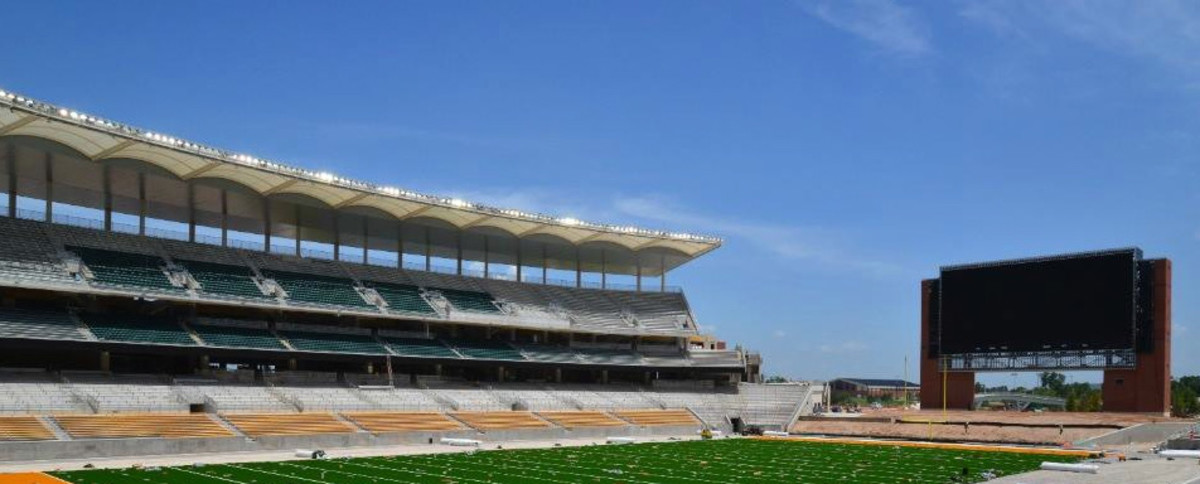
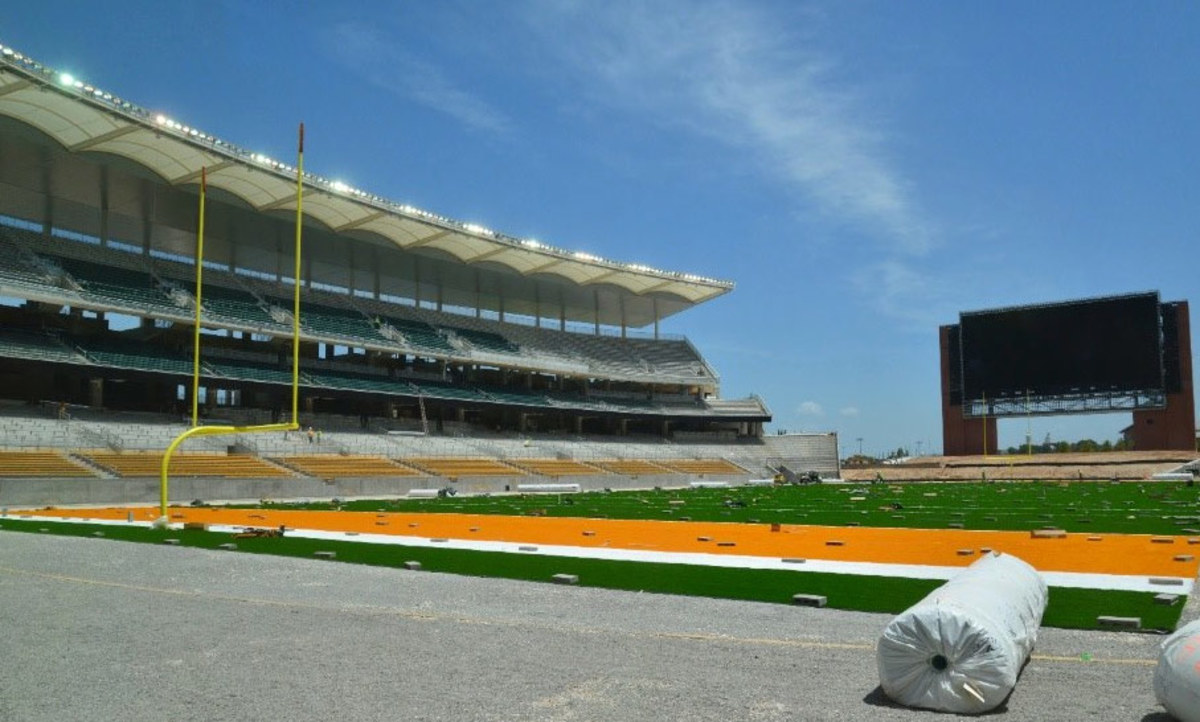
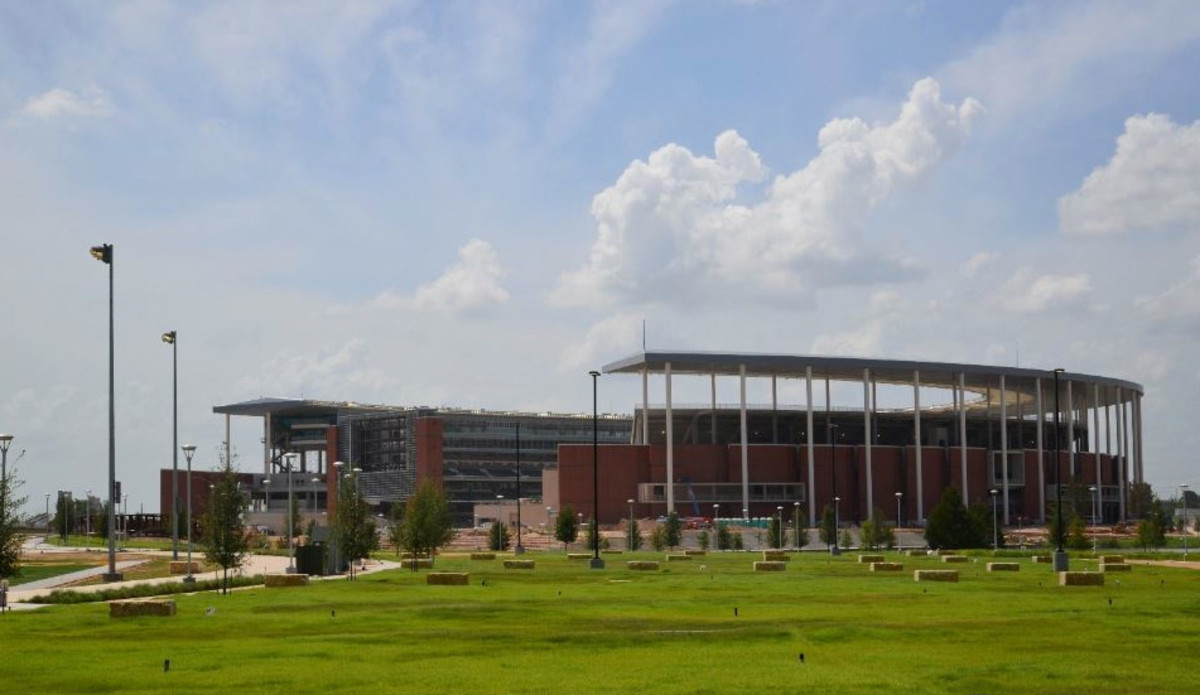
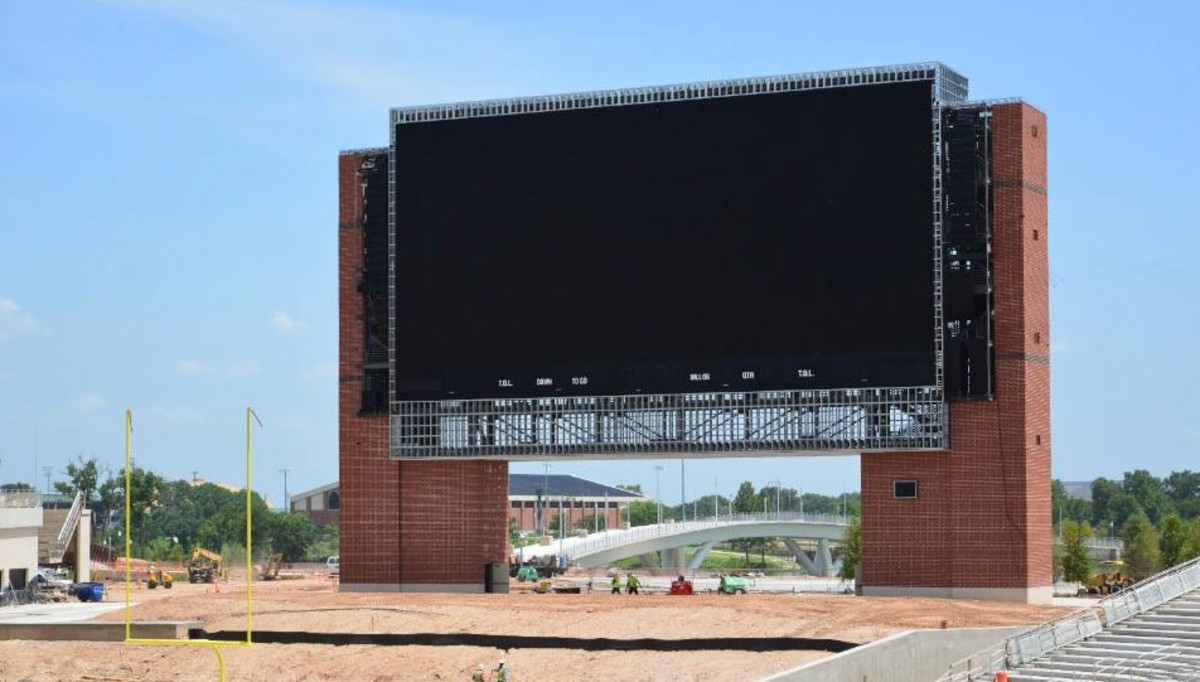
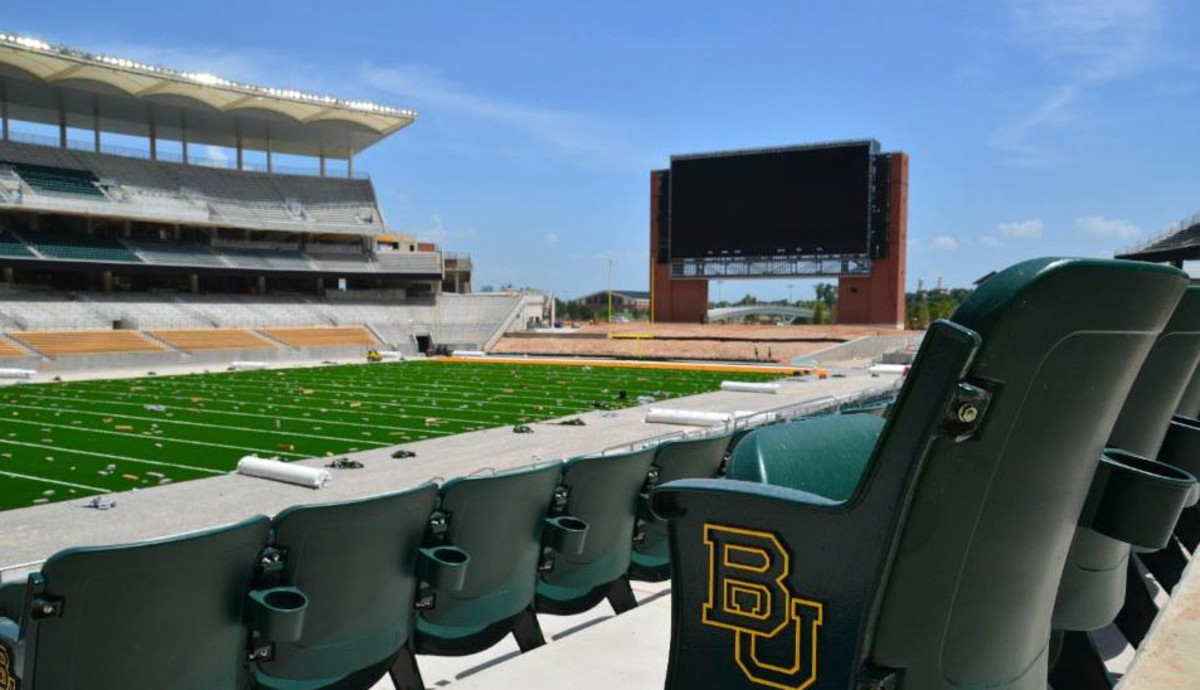
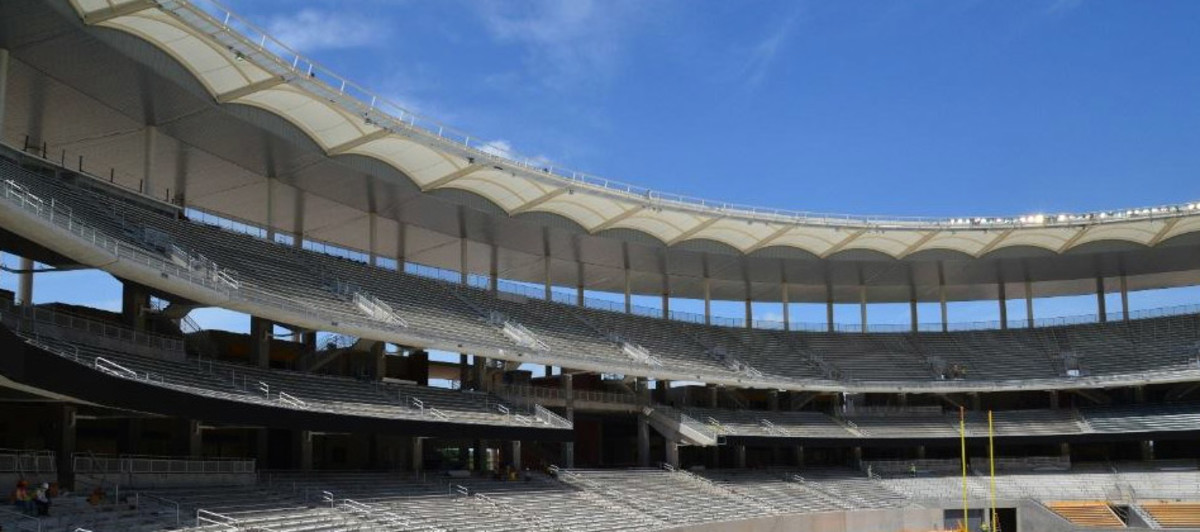
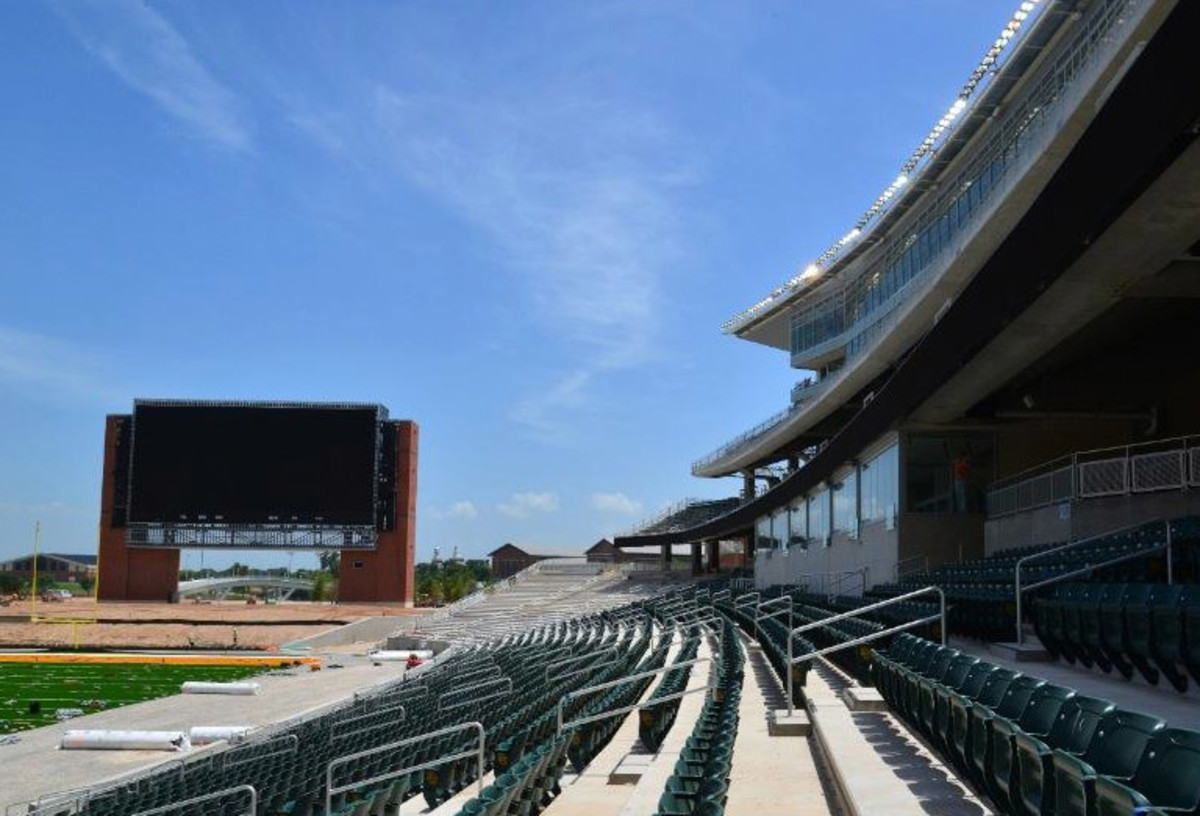
But once fans have had their fill of waterside living and settle into seats in the Texas sun, Spear wanted them to enjoy their seat, not bake in it. “That’s the big thing,” he said. “It is just the sun and the sky. In the early months, attendance would really suffer. We always conceived that we had to have a sun-shade canopy.”
The press box and suites on the west side help shade portions there and the 125-foot-long canopy over the east stands can shade up to 60 percent of all seats. “Even though it may not cover all the seats, we get a benefit from it all day,” Spear says. In the morning, shade keeps concrete from heating up and by the afternoon the canopy fully protects the direct sunlight hitting the upper deck, which is pushed forward to stack the bowls and get seats closer to the field.
Made from metal and fabric, the canopy still allows natural light to filter through but without the heat it would normally brings.
“We want to eliminate the idea of staying home is better than going to the game,” Todd Patulski, Baylor deputy athletic director, said about the importance of fan comfort, which will be aided by full covering of both concourses in the new stadium.
The horseshoe-style stays open on the south end but doesn’t fully wrap on the north end’s upper deck, encouraging wind flow. Gaps in the walls and open concourses also allow a breeze to help cool the facility.
Another great benefit of the canopy comes in the form of noise. The underside points toward the field, directing fan noise back down in a similar fashion to Seattle’s CenturyLink Field. But something Seattleites don’t have to fret about is the onslaught of millions of grackle birds and their droppings. Since the birds “poo a lot,” as Spear so delicately noted, designers wrapped the entire canopy with fabric to eliminate bird roosting areas, actually a major point of discussion during the design phase.
Patulski said leaving Floyd Casey Stadium, a 60-year-old off-campus stadium, allowed Baylor to make all sorts of statements and “dream big,” including building a new northern gateway to the Baylor campus as millions of people drive by on I-35 every year.
Baylor's defense ready to emerge from offense's shadow in 2014
“What a way to brand your school,” Patulski said. “There is so much visibility going on and add in the fact that we have a sizable body of water right next to it, it is pretty unique in college sports.”
Baylor will have year-round interest with the Baylor Club on the west side remaining open year-round serving three meals a day, six days a week for members. Six Founders Suites located off the lower bowl and mid-bowl create view-centric suites.
When building new — a luxury that few colleges can afford due to on-campus space constraints — designers were careful not to detract from traditions of old, namely the Baylor Line that sends 3,000 freshman onto the field to welcome the team. By keeping all 7,000 student seats on the sideline, a rare move for colleges looking to eek out every premium seating revenue dollar available, Spear needed to devise a system to quickly move those 3,000 yellow-clad students back to their seats. The solution was a series of tunnels under the east side lower bowl to filter the students from the field to below the stands, moving them back into their seats from underneath.
“It is an amplification of that tradition,” Spear said. “Not only do you get the students on the field, but the cool visual of bright yellow when they fill the stands.”
The on-campus aspect should help to fill those student seats, Patulski said. “If you’ve ever been on campuses where at least seven Saturdays out of the year football is the biggest thing going on, it is exciting. Students wake up, and the band is warming up, and you know your agenda that day is to go root on your team. There is nothing like it.”
Add in some sailgating and fresh amenities in the fully WiFi-connected stadium, and Baylor counts on the fact that nothing — not even in Texas — will quite match McLane Stadium.
Tim Newcomb covers stadiums, design and gear for Sports Illustrated. Follow him on Twitter at @tdnewcomb.
